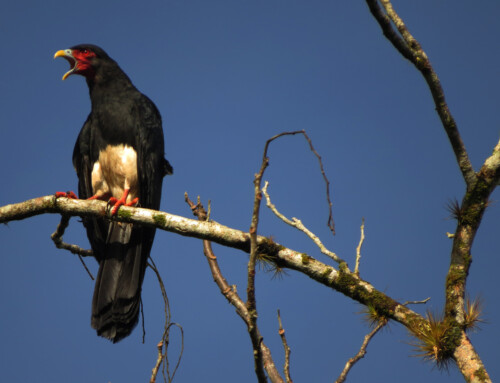 LINKED PAPER
LINKED PAPER
Population impact to bald eagles by ingested lead in New York State, 1990–2018. Hanley, B., Them, C., Hynes, K., Connelly, P., Bunting, E., & Schuler. K. 2022 Wildlife Society Bulletin. doi: 10.1002/wsb.1444 VIEW
In the United States (US), Bald Eagles (Haliaeetus leucocephalus) are one of a handful of species immediately recognizable by nearly everyone. Incalculable resources have been spent by local, state, and federal wildlife managers and regulators to pull eagles back from near extirpation after abundances fell to record lows from widespread use of the insecticide dichlorodiphenyltrichloroethane (DDT; Grier 1982). Despite their enormous public fame, eagles continue to face myriad threats from anthropogenic activities.
Long known to wildlife veterinarians and rehabilitators, but lesser known by the American public, are eagle mortalities from ingestion of lead (Pb). Obtained by scavenging contaminated materials such as carcasses, Pb is known to have deleterious effects on avian species, but until recently, the impact of Pb specific to eagle populations remained unknown. Hanley et al. (2022) and Slabe et al. (2022) discovered that mortality from the ingestion of Pb amounted to population-scale impacts in the northeast US as well as nationally (respectively).

Figure 1 © Scott Armstrong, Lake Moraine.
Given that decisions in wildlife management in the US are largely the prerogative of state agencies (Organ et al. 2012), we wondered how Pb impacted populations of resident eagles in a single US state. We used three decades of nesting counts and necropsy data collected by the New York State Department of Environmental Conservation (NYSDEC) in conjunction with a combinatorial optimization algorithm to pinpoint alterations in annual survival of hatchlings, immature, and breeding eagles in the observed presence and hypothetical absence of Pb-related mortalities. By state law, every eagle carcass discovered dead in New York State was examined by pathologists of the NYSDEC’s Wildlife Health Program, rendering a complete dataset of mortality of the species in that area.
While the wild eagle population in New York State expanded between 1990 and 2018, state wildlife biologists and pathologists evaluated 594 bald eagle carcasses, 8.2% (49/594) of which died as a direct result of Pb poisoning and 6.1% (36/594) of which died with sufficient Pb levels to be deemed Pb exposed. In total, 14.3% (85/594) of the eagles found dead in New York had eaten at least one meal contaminated with anthropogenic sources of Pb.
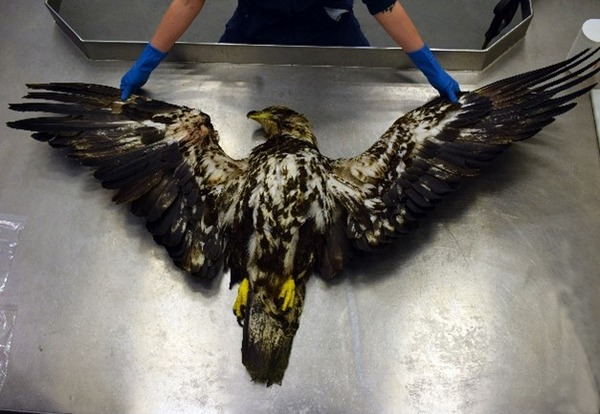
Figure 2 © Jennifer Peaslee, Cornell Wildlife Health Lab.
A well-known idea regarding sustainable harvest in plant or animal species is that the removal of a few individuals can occur without affecting the overall population. Alternatively, additive mortality means elimination of individuals translates into population-scale impacts, which may (in the case of noxious species) or may not be (in the case of threatened or endangered species) constitute a desired management outcome. Death from Pb mortality is additive for bald eagles in New York State; eagle populations are not able to compensate for deaths related to Pb. Empirical evidence suggested that the long-term growth rate of the population was 3.5% (females) to 3.6% (males) lower than expected in the presence of Pb mortalities.
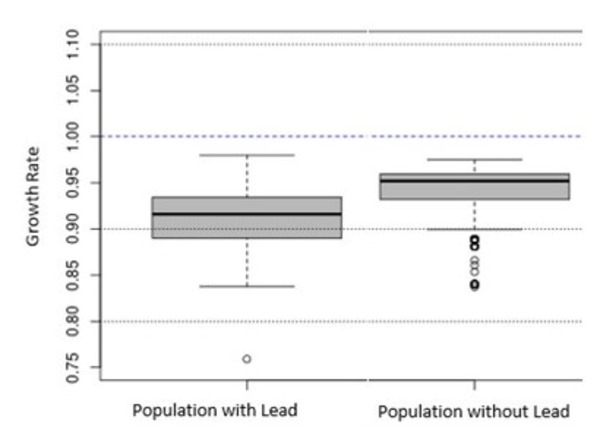
Figure 3 Comparison of the growth rate between contaminated (with lead) and uncontaminated (without lead) female eagle populations in New York State, US from 1990-2018. The removal of lead-mortalities would increase the growth potential of the population by 3.5% annually. The figure is obtained from the interactive software program, NYCounterPOPdV2.
Breaking these results down by age/sex segment of the eagle population revealed that Pb mortality disproportionately impacted non-breeding eagles with a 5.6% (females) and 5.2% (males) reduction in annual survival of these younger birds. Similarly, mortality from Pb impacted female breeding eagles with a 5.7% (females) reduction in annual survival.
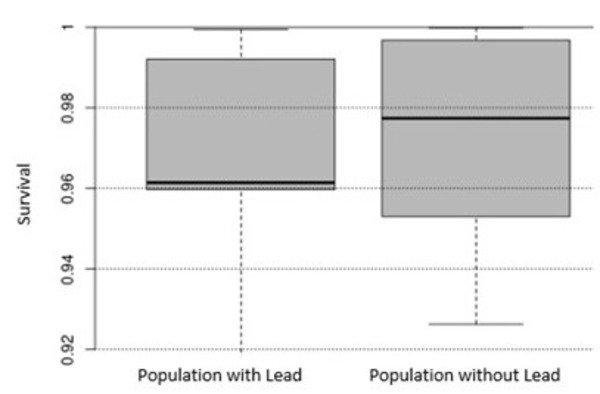
Figure 4 Comparison of the survival of breeders in contaminated (with lead) and uncontaminated (without lead) eagle populations in New York State, US from 1990-2018. The removal of lead-mortalities would increase median annual survival of female breeders by 5.7% but would not alter survival of male breeders. The figure is obtained from the interactive software program, NYCounterPOPdV2.
Management implications
State-specific analyses of the population scale impact of Pb to eagles are critical in the US as they are useful to wildlife managers, educators, and policymakers to understand how even inconspicuous sources of mortality can translate into undesirable population consequences. Such studies are further helpful in guiding targeted management actions, providing decision support for regulations, or educating the public in specific areas via outreach campaigns to promote voluntary use of non-toxic materials in habitats frequented by scavenging eagles and other wildlife species.
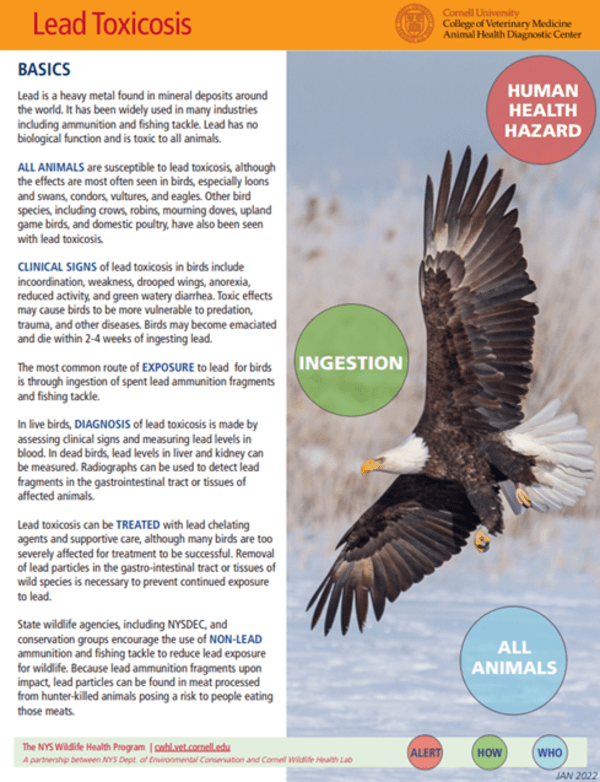
Figure 4 © Jennifer Peaslee and Rachel Abbott, Cornell Wildlife Health Lab.
References
Grier, J.W. 1982. Ban of DDT and subsequent recovery of reproduction in bald eagles. Science 218:1232-1235. VIEW
Hanley, B.J., A.A. Dhondt, M. Forzán, E.M. Bunting, M.A. Pokras, K.P. Hynes, E. Dominguez‐Villegas, & K.L. Schuler. 2022. Environmental lead reduces the resilience of bald eagle populations. Journal of Wildlife Management 86:e22177. VIEW
Organ, J.F., V. Geist, S.P. Mahoney, S. Williams, P.R. Krausman, G.R. Batcheller, T.A. Decker, R. Carmichael, P. Nanjappa, R. Regan, R.A. Medellin, R. Cantu, R.E. McCabe, S. Craven, G.M. Vecellio, & D.J. Decker. 2012. The North American Model of Wildlife Conservation. The Wildlife Society Technical Review 12-04. The Wildlife Society, Bethesda, Maryland, USA. VIEW
Pain, D.J., R. Mateo, & R. E. Green. 2019. Effects of lead from ammunition on birds and other wildlife: a review and update. Ambio 48:935-953. VIEW
Slabe, V., J.T. Anderson, B.A. Milsap, J.L. Cooper, A.R. Harmata, M. Restani, R.H. Crandall, B. Bodenstein, P.H. Bloom, T. Booms, et al. 2022. Demographic implications of lead poisoning for eagles across North America. Science 375:779-782. VIEW
Image credit
Top right: Andy Morffew © CC BY 2.0 Wikimedia Commons.
If you want to write about your research in #theBOUblog, then please see here.



